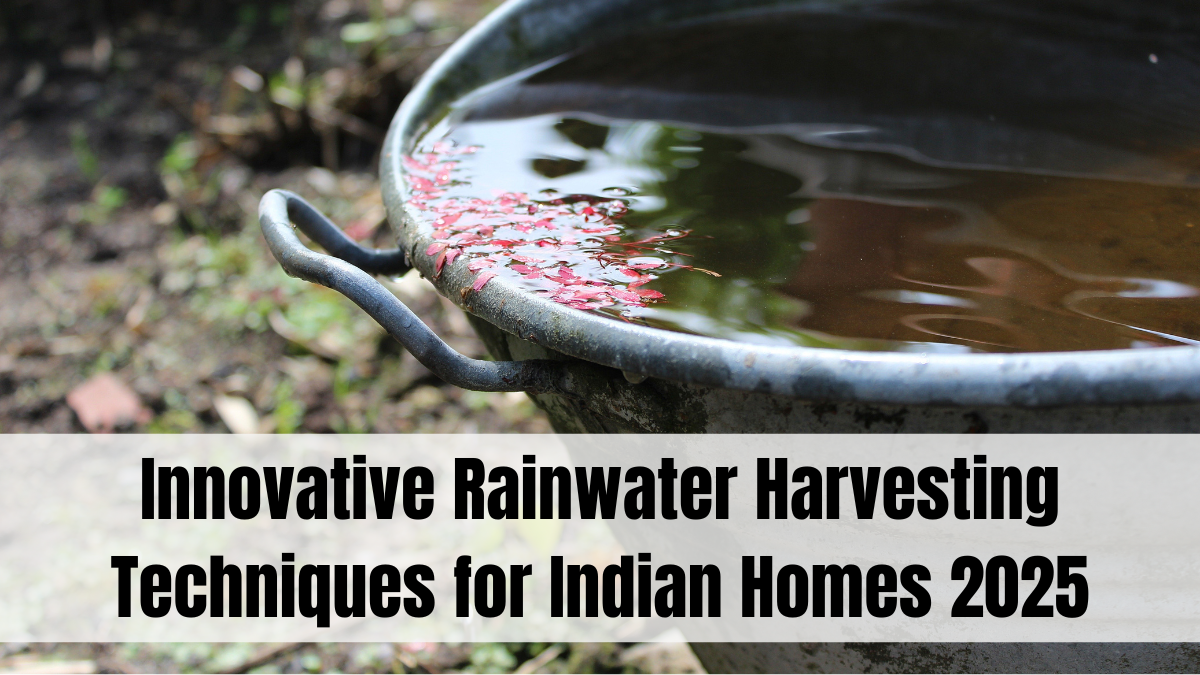Water scarcity remains a critical challenge in many parts of India. In 2025, rainwater harvesting techniques India 2025 have evolved with innovative approaches that enable households to efficiently capture, store, and utilize rainwater. These advancements contribute significantly to water conservation, reduce dependency on groundwater, and support sustainable living.
This article provides an in-depth look at modern rainwater harvesting methods, their benefits, implementation tips, government support, and future prospects.

Why Rainwater Harvesting Is Crucial for Indian Homes
India’s rapid urbanization and climate variability have strained water resources, making rainwater harvesting essential for:
-
Reducing groundwater depletion caused by over-extraction.
-
Supplementing municipal water supply, especially in water-stressed areas.
-
Mitigating urban flooding by managing stormwater runoff.
-
Lowering water bills through self-sustained water usage.
-
Promoting eco-friendly, sustainable lifestyles aligned with national water policies.
Effective rainwater harvesting helps households become water-resilient.
Latest Innovative Rainwater Harvesting Techniques in 2025
-
Rooftop Harvesting with Filtration: Advanced filtration units ensure clean water collection from rooftops, removing debris and contaminants before storage.
-
Percolation Pits with Biofilters: These pits facilitate groundwater recharge by allowing water to seep naturally, enhanced with biofilters to purify percolating water.
-
Modular Rainwater Tanks: Space-saving, stackable tanks that fit compact urban homes and optimize water storage.
-
Smart Sensors for Water Monitoring: IoT-enabled sensors monitor water levels and quality, sending alerts via apps for maintenance and optimal usage.
-
Green Roof Systems: Vegetated roofs capture rainwater while reducing building heat, improving insulation and stormwater management.
-
Recharge Wells with Aquifer Mapping: Advanced techniques map underground water channels to position recharge wells for maximum groundwater replenishment.
These innovations increase harvesting efficiency and ease of management.
Designing an Effective Rainwater Harvesting System for Your Home
-
Assessment: Evaluate average rainfall, roof area, catchment surface, and water needs.
-
Collection: Install gutters and downpipes designed for maximum rain capture and minimal leakage.
-
Filtration: Use mesh filters, first-flush diverters, or sedimentation tanks to clean incoming water.
-
Storage: Select storage tanks made from durable, non-toxic materials; consider modular or underground options for space efficiency.
-
Utilization: Use harvested water for gardening, flushing, washing, or treat further for potable use.
-
Recharge: Incorporate recharge pits or wells if groundwater replenishment is a priority.
Proper planning and maintenance are essential for system longevity and effectiveness.
Benefits of Modern Rainwater Harvesting Techniques
-
Water Security: Provides reliable supplemental water supply, especially in drought-prone areas.
-
Cost Savings: Reduces dependency on municipal water, lowering bills.
-
Environmental Impact: Supports groundwater recharge, improving local ecosystems.
-
Urban Flood Mitigation: Helps control stormwater, reducing urban flooding risks.
-
Increased Property Value: Sustainable water systems are attractive features for homebuyers.
Rainwater harvesting aligns personal and community water goals.
Government Policies and Incentives Supporting Rainwater Harvesting
-
Many state governments mandate rainwater harvesting for new constructions, offering guidelines and technical support.
-
Subsidy schemes and low-interest loans for installing rainwater systems encourage adoption.
-
Awareness campaigns educate citizens on water conservation and system maintenance.
-
Partnerships with NGOs and private firms promote innovative solutions and training.
Staying updated on local regulations and incentives can ease installation and reduce costs.
Future Outlook: Rainwater Harvesting in Indian Homes
-
Integration with smart home systems for automated monitoring and maintenance.
-
Development of community rainwater harvesting networks linking multiple households.
-
Increasing use of recycled and eco-friendly materials in system components.
-
Expansion of rooftop greenhouses coupled with rainwater systems for sustainable urban farming.
-
Greater emphasis on combining rainwater harvesting with wastewater recycling for holistic water management.
These trends ensure rainwater harvesting remains central to India’s water future.
FAQs
What is the ideal roof type for rainwater harvesting?
Roofs made of non-toxic materials like metal sheets, tiles, or concrete slabs work best.
How much rainwater can a typical Indian home harvest?
Depending on roof size and rainfall, thousands of liters can be collected annually.
Is harvested rainwater safe for drinking?
With proper filtration and treatment, rainwater can be made potable; otherwise, use for non-drinking purposes.
How often should a rainwater harvesting system be maintained?
Regularly clean gutters, filters, and tanks every 3-6 months to ensure system efficiency.
Are there financial aids available for installing rainwater harvesting systems?
Yes, several states provide subsidies or incentives; check with local municipal authorities.
Click here to know more.
